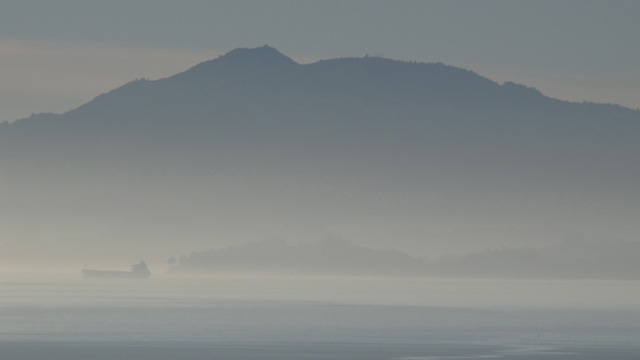In particular, forecasters watch for a temperature inversion, a common wintertime condition when the air hundreds of feet up is warmer than at ground level. “The colder the surface is, the stronger the inversion is going to be,” explains Malone, and that warmer air aloft acts like a lid that locks in pollution. The worst days tend to be during strong inversions.
“We look at the strength of the nighttime inversion, which is almost two-thirds of each day during this time year,” says Malone, whose team can then compare conditions to historical data, to see how likely those conditions are to spike pollution the next day.
“We keep a running history every winter of what minimum temperatures might lead to what particulate concentration.”
When lower pressure from the Pacific brings breezier conditions to the Bay or the ground warms up from milder temperatures, it tends to break up the inversion and allow pollution to escape into the upper atmosphere. Rain will also wash out the air. Then officials are apt to cancel the air alert.
“But every day in meteorology can be different,” says Malone.
Today’s air quality can also affect tomorrow’s, so forecasters check current air quality against the federal standard of 35 micrograms per cubic meter of tiny airborne particles known as PM 2.5, a reference to their size. At just a fraction the width of a human hair, particles this small are easily inhaled and can make it all the way into the blood stream.
A .500 Batting Average
The Air District maintains a network of 32 air quality monitors around the nine-county area. “We can see from our monitoring network what it is today and then extrapolate into the next day,” says Malone.
And how often are they right? Malone says it’s about half the time — but he hastens to add that when they’re wrong, they’re usually not far wrong. “Often times we come just under that national standard,” he says, and adds that in many of those cases, local air quality comes in under the wire because of Spare-the-Air measures taken the previous day.
Air quality also tends to be patchy; it can vary widely around the region. If indications are that just one place will fall below the federal bar, air managers will declare a Spare-the-Air day for the entire region.
Winter alerts are triggered by entirely different concerns than in summer, when the biggest worry is a high level of ground-level ozone, an unhealthy condition driven by car exhaust and hot temperatures.
